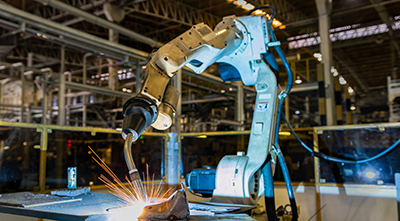Resistance welding is a widely used technique in modern manufacturing that joins metal parts using heat generated by electrical resistance. This process involves applying pressure and passing an electric current through the materials being joined, creating a strong bond without the need for additional filler materials. As automation continues to evolve, resistance welding has become even more efficient, precise, and adaptable to various industrial applications. At its core, resistance welding relies on the principle that when electric current flows through a material, it generates heat due to the material's resistance. In this method, two or more metal components are clamped together under pressure, and then a controlled amount of current is applied for a short period. The heat generated at the contact points melts the metals, which then fuse together as they cool, forming a solid joint. There are several types of resistance welding, each suited for different applications. These include spot welding, seam welding, flash welding, projection welding, and upset welding. Each method uses specific electrode configurations and techniques to achieve optimal results, making them ideal for various industries such as automotive, aerospace, and electronics. Spot welding is one of the most common forms, typically used for joining thin metal sheets. It applies pressure and current through two electrodes that press against the workpieces, creating a small, localized weld. Seam welding is similar but instead of single spots, it creates a continuous weld along a seam, often used in the production of cans or automotive panels. Flash welding involves bringing two workpieces together with high pressure and a large current, causing a flash of heat that expels impurities from the joint. Upset welding works similarly but without the flashing, as the parts are already in close contact. Projection welding focuses the heat on specific points using raised areas on the components, making it ideal for welding nuts, bolts, or other fasteners onto metal surfaces. One of the main benefits of resistance welding is its speed and efficiency. Compared to traditional methods like riveting or bolting, it significantly reduces assembly time while providing stronger, more consistent joints. It also minimizes the risk of warping or damaging the workpiece, which is crucial in precision manufacturing. Another advantage is its energy efficiency. Modern systems can operate on single-phase AC power or mid-frequency DC, allowing for better control over the welding process and improved energy use. Additionally, resistance welding produces clean, high-quality welds with minimal post-processing, making it a cost-effective solution for many manufacturers. If you're looking to explore how robotic resistance welding can benefit your business, consider downloading our free ebook, “6 Business Considerations for Robotic Welding Investments.†It offers valuable insights into maximizing productivity and ROI with automated welding solutions. Thermoforming Modified Atmosphere (MAP) Packaging Machine Thermoforming Modified Atmosphere Packaging Machine, Packaging Machine Line in Rigid Film, Modified Atmosphere (MAP) Packaging Machine, Prepared Meals Packaging Machine ZHUCHENG YIKANG FOOD PACKING MACHINERY CO., LTD. , https://www.yikangmachinery.comWhat is Resistance Welding and What Are the Different Types?

A Quick Overview of Resistance Welding
Why Choose Resistance Welding?